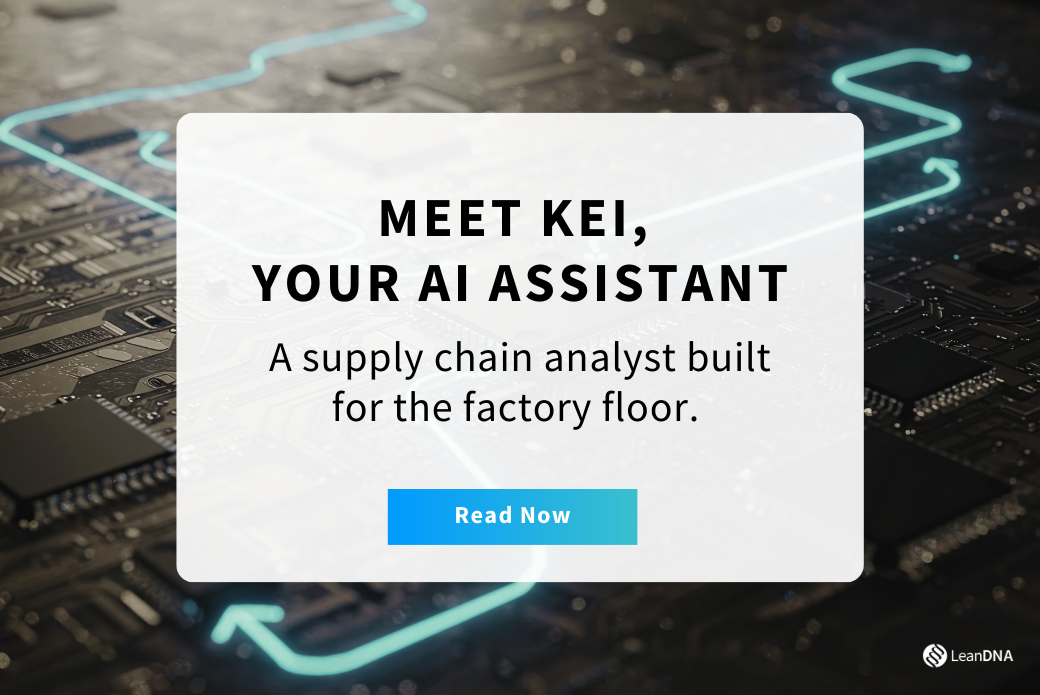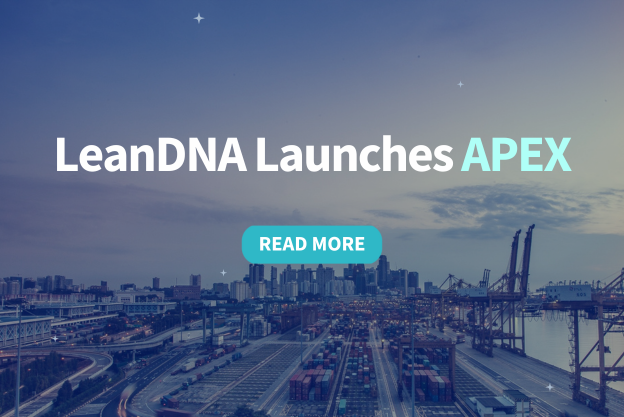As supply chains grow more complex, businesses are increasingly turning to advanced technologies like artificial intelligence (AI) and robotic process automation (RPA) to drive optimization, resilience, and competitive advantage. LeanDNA is also part of this transformation, applying AI to drive more accurate and timely insights, optimizations, and automations, giving customers a competitive advantage in how they tackle supply chain challenges. In a recent webinar, James Dawsey, Director of Supply Chain Data and Technology at Modine Manufacturing, shared how leveraging AI, automation, and low-code/no-code solutions can revolutionize supply chain operations. Here are the top takeaways from this insightful discussion:
1. The Power of AI in Supply Chain Operations
“AI is proving to excel in the ability to interpret large data sets, like we have in the supply chain world, to generalize and adapt to new situations and new problems, and to reason about uncertainty.” - Robert Des Rosier, Senior Technical Product Manager at LeanDNA
AI-driven automation enhances efficiency by streamlining workflows between planners, buyers, and suppliers, while also enabling better predictability by integrating procurement data and market research into actionable insights. This helps:
- Improve supplier performance by proactively identifying risks
- Enhance delivery planning through macroeconomic and geopolitical data analysis
- Increase productivity with generative AI agents that automate procurement and decision-making
The future of AI in supply chains will involve interconnected generative AI agents working collaboratively across networks to optimize decisions in real-time.
2. Automation’s Role in Driving Resilience
James Dawsey compared the current wave of AI and automation adoption to when smartphones were released. Everything changed because of a new disruptive technology, and that’s happening today in the world of manufacturing. In supply chain management, automation now powers tasks previously dependent on manual labor and complex audits.
“We are on the precipice of a real paradigm shift with AI and Automation” - James Dawsey, Director of Supply Chain Data and Technology at Modine Manufacturing
Distribution warehouses look very different today than they used to. Going from fork lift drivers manually retrieving and counting inventory, automated storage and retrieval systems have completely taken over. Robotics are in almost every warehouse. The nature of work changes, and so do the required skills.
3. Building a Foundation for Digital Transformation
Successful automation and AI deployment depend on a robust business intelligence (BI) infrastructure:
- Standardized, structured data from ERP systems and other sources
- Data storage and harmonization for efficient big-data processing
- Data modeling and visualization tools that make insights actionable
Low-code/no-code platforms like Microsoft Power BI and Power Automate empower business users to develop automation solutions directly within the organization, bridging the gap between IT and business needs. By leveraging these economical, user-friendly tools, companies can:
- Reduce dependency on specialized IT resources
- Create agile, adaptive solutions that address evolving challenges
- Drive innovation by enabling "Citizen Developers" to automate workflows without programming expertise
4. Lessons from Moneyball: A Data-Driven Approach to Automation
Drawing on the Moneyball analogy, Dawsey emphasized that supply chain leaders with limited budgets must adopt innovative strategies for automation and data utilization. He explained that just as the Oakland A’s famously built a competitive baseball team by focusing on undervalued player statistics rather than expensive talent, businesses can achieve significant gains by shifting from traditional infrastructure investments to data-driven automation and agile solutions. There are plenty of tools like LeanDNA that offer scalable, low-cost automation capabilities that allow organizations to harness the power of their data and innovate without the need for extensive IT resources. Just as the Oakland A’s used data-driven player evaluations to compete with wealthier teams, manufacturers can prioritize automation efforts by evaluating processes for scalability, error reduction, and ROI potential.
The key takeaway: Just like baseball’s shift from intuition to data-backed decisions, businesses should leverage modern platforms like Microsoft Power Platform to broaden access to technology development and bring automation opportunities within reach for all teams, maximizing impact without requiring large IT budgets.
5. A Structured Path to Automation Success
So how do we actually implement automation in our organizations? James outlined his approach in nine steps:
- Engage stakeholders to understand key processes
- Map processes to identify inputs, outputs, and dependencies
- Categorize processes by complexity, error-proneness, and volume
- Evaluate feasibility based on technical compatibility and operational impact
- Prioritize automation opportunities by balancing quick wins and high-impact areas
- Pilot automation with 2-3 processes at a single location, optimizing before scaling
- Document learnings and adjustments to refine the automation approach
- Scale strategically using insights from pilot programs
- Review quarterly to continuously identify new automation opportunities and improve existing ones
The Road Ahead: Embracing Disruption
AI and automation are no longer futuristic concepts—they are driving tangible results in supply chain resilience and efficiency today. Businesses that embrace these technologies can navigate disruption more effectively, reduce costs, and position themselves for long-term success.
LeanDNA customers will see opportunities to take advantage of AI in the form of LLM and model-driven risk assessments (PO delivery risks, shortage assessments, etc.), inventory actions, and tools to optimize order policy.
If you missed the webinar, we highly recommend you watch the on-demand recording. It’s packed with actionable insights and real-world examples that can help you start unlocking potential with AI Automation and RPA.
Ready to take the next step? Contact us to learn how LeanDNA can support your journey towards a more efficient supply chain.






